It is coming up on the eleventh anniversary of the death of Pontiac, a fatality not so much of the 2007-2008 financial collapse – which delivered the coupe de grace – but rather attributable to slow-poisoning by the parent company, General Motors, a process that began decades before the flat-line made its sorrowful progress across the screen in October of 2010.
Pontiac was once GM’s stylish performance division. Other GM divisions, notably Chevrolet and even Buick and Oldsmobile, also had stylish cars that offered performance. But Pontiac’s way of serving both together was unsurpassed by either.
There was nothing in either the Olds or the Chevy inventory for that matter to stand equally tall with a classic ’60s GTO – just one piece of evidence in support of Pontiac’s rightful claim to have been (sigh) the premier stylish performance division of General Motors.
Car people will argue eternally about whether the 1964 GTO was the first muscle car but it is inarguable that it was the first hugely successful one, inspiring a panoply of imitators that all had their merits but none of which could lay honest claim to being the first mass market muscle car.
And the GTO, of course, was more than a hot-seller and a hot performer. It led the way in styling, too. Pontiac, under the leadership of John DeLorean, worked on this car (and others, like the Catalina 2-plus-2 and of course, the Grand Prix SSJ, the latter initials in honor of John Z) like Leonardo worked on the sculpture of Duke Francesco Sforza’s horse back in 1482.
A Pontiac’s lines were always sleeker; there was always more attention to detail. And always, special details not found on other cars – like the gorgeous eight-lug wheels on the Catalina and – later – the unique Honeycomb wheels and machine-turned dash facings that graced the early Trans-Ams (as well as GTOs and other Pontiacs, too)
Who else had the audacity to mount a tachometer on the hood? Or an enormous decal of a bird on the hood?
Pontiac!
This was also the last GM division to defy Uncle for the sake of its customers – who wanted the performance (and style) that the government was systematically outlawing without actually passing any laws.
Just regulations, that had the same effect.
There was, for instance, the federal “drive by noise” regulation, which served to effectively outlaw hood scoops that actually scooped air. In those days, when cars still had carburetors, a scoop that worked opened the mechanical maw of the engine to the air, which was literally sucked down through the carburetor, to accompaniment of a moan or roar that gave you goosebumps and a hiss at idle that conveyed menace. All regulated out of existence by life-sucking ninnies who lacked any sense of the beauty of sound, themselves – and who were determined to make sure no one else enjoyed it, either.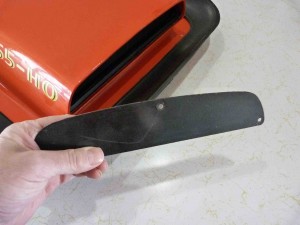
But Pontiac did a sly – and wonderful – thing. While the famous “shaker” scoop that was one of the defining elements of a ’70s Trans-Am was rendered non-functional after the 1972 model year, Pontiac left it such that it could be made easily functional again. A simple block-off plates was installed. Not with glue or some other permanent or at least, hard to “defeat” impediment – but with three bolts that could be removed in less than five minutes.
And the Quadrajet moan returned!
But it was in 1973 that Pontiac really put a dead shrimp behind Uncle’s drywall. It wasn’t just scoops that were rendered nonfunctional by that year. Performance engines – or rather, engines with any real performance relative to the performance available the previous year, had also been regulated out of existence. GM management had ordered a lineup-wide reduction in compression ratios, which put the kibosh on performance in the same way that pulling two of a V8’s spark plug wires would – only this was worse because it is a lot easier to reconnect spark plug wires than restore lost compression.
But Pontiac found a way, even in the face of GM management’s fatwa. The engineers – Pontiac still had them, then – designed a whole new engine, the Super Duty (or SD) 455 and got it past the regs by letting the Feds think it was just another 455, which Pontiac had already been making.
But this 455 had almost nothing in common with other 455s – not even its block, which was unique (and heavily made, with special webbing, four bolt mains and provisions for dry-sump oiling, intended for racing). It got special high-flow heads and an intake not used on other Pontiac V8s, along with a high-flow and specially tuned Rochester Quadrajet four barrel and – of course – an even more special camshaft with extremely impolitic lift and duration.
Initially, this engine made 310 horsepower – a huge number for 1973 – and the engineers got it past the EPA smog police, too.
Of course, not even Pontiac could get past catalytic converters – which were force-grafted onto every car made, beginning with the ’75 models. This killed off the SD-455, which was last offered in ’74. But it didn’t kill Pontiac.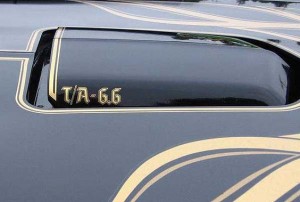
It took GM to do that.
Pontiac managed to thrive in the mid-late ’70s, being almost solely responsible for carrying the performance with style flag during those dark years. It didn’t stop making Trans-Ams, the performance version of the Firebird, when catalytic converters plugged up performance beginning in ’75 – though Chevy did stop selling the Z28 version of the Camaro and everyone else pretty much gave up, too.
Not Pontiac.
The ’75 Trans-Ams weren’t SD-455 Trans-Ams, but they were still Trans-Ams and you could buy them brand new with 400 or 455 V8s that had the potential for SD performance and all of the rest was already there. The flares and scoop (easily made into a working scoop again). The excellent suspension, unaffected by emissions regs and made even better by Pontiac engineers such that the Trans-Ams of the ’70s were the best-handling cars of the time.
Pontiac continuously made the best of it in bad times.
Real performance returned in ’77 when the Trans-Am became available with a high-output version of the 400 V8 that made even more power than the Corvette’s smaller 350 V8. Aluminum wheels – a big deal in ’77 – were on the docket as well, expanded to 15×8 inches the next year. Four wheel disc brakes (another big deal in an era when literally almost every car on the road except Corvette still had drum rear brakes) came after that.
Pontiac thrived like dandelions after a spring downpour. But it wasn’t just on the strength of Trans-Am sales – though the sales of that car are boggling in retrospect. During those years, Pontiac sold more Trans-Ams, a specialty model, than GM sells all Camaro models and Corvettes combined today. As an example, total Firebird production reached 187,284 in 1978. In 2019 – the last pre-‘Rona sales year – Chevy sold a total of 48,265 Camaros – encompassing all versions, the base four cylinder model all the way up to the SS.
In 1979, Pontiac sold 117,108 Trans-Ams alone. Total Firebird sales crested 200,000.
GM hasn’t sold that many cars, period – never mind specialty sport coupes – in one year in many years. Other monster-wave successes for the arrowhead division included the Grand Prix and Grand Am, LeMans and Bonneville.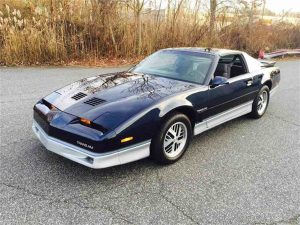
So, why isn’t Pontiac selling anything today?
Because GM made Pontiac stop selling Pontiacs after the 1981 model year. GM “corporatized” engineering – a bland-sounding term, like “fixing” a cat. What it meant was the same as far as Pontiac’s ability to propagate.
The division, which had been an engineering division of GM – with its own engine shop that designed Pontiac engines like the GTO’s 389 (which became the 400) and the various iterations of the 455 (including the legendary SD-455) – was transformed by upper management fiat into a marketing division of GM. It would no longer design cars.
It would resell cars.
Pontiacs became so in name and looks only, mechanically indistinct from other GM models – with only the style remaining. A 1982 Trans-Am had the exact same Chevy-designed engine as its Camaro Z28 counterpoint. It was a nice-looking car but there wasn’t enough under the hood to give enough buyers a reason to spend more on it than on its Chevy-badged (and lower-priced fraternal twin).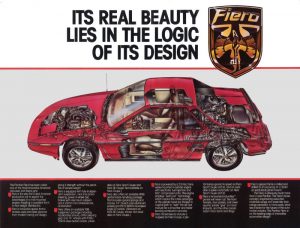
It explains why there is no Trans-Am today.
Pontiac tried, desperately, to keep the flame alive. It was allowed by GM management to sell the plastic-paneled, mid-engined Fiero – which no other GM division sold. But cost-cutting rendered what had been a splendid idea into a good-looking car with too many Chevette underthings and not enough quality control into an image-beating from which Pontiac – already weakened by the loss of its V8 engine program – never really recovered.
After the Fiero, Pontiac never again had a uniquely Pontiac model of its own to sell. Excepting the Aztek, of course – the obsidian knife in the back of Chief Plenty Horses.
Other than that, Pontiac was only permitted to re-sell other divisions’ models, after some perfunctory “Pontiac” styling (usually in the form of too much body cladding) was added.
By the mid-2000s Pontiac was a hollowed out throw-away of its former self, like a watermelon rind the day after a 4th of July party. The Great Collapse of 2007-2008 sealed its doom, though its death was as predictable – and inevitable – as that of the United States itself.
In both cases, it took a long time to undermine the strength of what had been something mighty and seemingly impervious.
But, as the slave behind Caesar during his Triumphs said, sic gloria mundi . . . all glory is fleeting. Whether cars or countries. Pontiac is gone more than ten years now. But car people will always remember what was, once.
. . .
Got a question about cars, Libertarian politics – or anything else? Click on the “ask Eric” link and send ’em in!
If you like what you’ve found here please consider supporting EPautos.
We depend on you to keep the wheels turning!
Our donate button is here.
If you prefer not to use PayPal, our mailing address is:
EPautos
721 Hummingbird Lane SE
Copper Hill, VA 24079
PS: Get an EPautos magnet or sticker or coaster in return for a $20 or more one-time donation or a $10 or more monthly recurring donation. (Please be sure to tell us you want a magnet or sticker or coaster – and also, provide an address, so we know where to mail the thing!)
My eBook about car buying (new and used) is also available for your favorite price – free! Click here. If that fails, email me at EPeters952@yahoo.com and I will send you a copy directly!




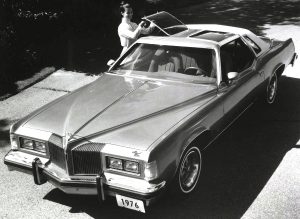


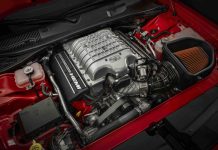




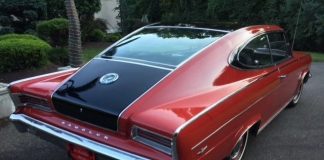
Eric,
Great article about Pontiac. It makes me want to go outside to work on my “69 Firebird.
My goal is to get it mechanically sound and road worthy/street legal…then focus on rust repair.
350 2bbl 4 speed
Excellent, Frankie – I achieved my purpose!
I hope to get some TA time in this weekend. Though it’s not a Hellcat Redeye, it still makes me smile, every time!
Eric,
The TA is there to be driven…good to hear.
It’s funny…I just noticed that my last inspection was in 1992!
My 3 kids are grown, my wife is gone…but I still have my ’69 Bird – I think that there is a song in there somewhere.
I’ll never forget my first ride in a buddy’s restored ’69 GTO – getting slammed back into the bucket seat with every shift of the 4-speed. The sound and fury of an old-school big-block V8. The only other ride I’ve had that compared was the Shelby Cobra.
A Pontiac won the Winston Cup (albeit with an SB2 engine) with Tony Stewart in 2002. Two years later, they were out of the sport entirely. Let that sink in for a minute.
Hi Bardelys,
Yup. And it was Pontiac that popularized the Trans-Am series, even though the first (1969) Trans-Am never competed in it (due to development problems with the 303 engine, if I remember correctly; the 400 production engine exceeding displacement limits for the race). It’s not well-known, but the last Pontiac V8, the 301 – used in the ’80-’81 Trans-Am and other Pontiac models – was designed using elements of the 303 racing program. In production form, the 301 wasn’t much to brag about, but then it was a brand-new engine – sharing no major parts with the traditional 400/455 family of Pontiac V8s – and had the plug not been pulled, had Pontiac had time to develop this engine, it just might have become something to brag a lot about.
Consider what Buick was able to do with its 3.8 V6, which was also not much to brag about when it first entered production in the ’70s. But by the mid-1980s, with a turbo and EFI, it was the most powerful regular production engine GM made – more powerful than the V8s Chevy was putting in Camaro Z28s and Corvettes, even!
Imagine what the 301 might have done, with two more cylinders and 4.9 liters vs. six and 3.8!
My 1979 Grand Prix had the 301, very smooth motor. People riding with me would comment sitting a traffic light, “I think your engine died” Nope, just a silk smooth idle.
Buying parts was entertaining: “need a fuel pump for a 79 Gran Prix 301”
“You mean 305”. “No, PONTIAC 301, please keep looking”
Hi Sparkey,
Yup! Also: There is a guy – I’m brain fogging and can’t remember his name – who specializes in 301 builds. He has gotten around 300 streetable horsepower out of a mostly stock 301 with a properly designed turbo and exhaust (the ’80-’81 systems were slapped together and produced not much boost and a lot of backpressure through the crappy single pellet-style cat).
Imagine that 300 hp in an ’82 Trans-Am, which weighed about 800 pounds less than the previous generation Trans-Am… these cars (the ’82-up Trans-Ams) were supposed to have gotten the 301; hence the off-center hood scoop for the turbo.
So sad it never happened.
GM should have been broken up to save the individual brands. If there was a real free market, we would be having the opposite of what is happening with the car companies. Instead of a handful of bigger manufacturers all getting merged together, bigger ones split up to make lots of nimble smaller ones.
GM is trying to sell cars to people who don’t care about cars. I remember an old Mad Magazine piece about the evolution of successful businesses. It went something like this (my memory being pretty worthless when it comes to such things): “Mom” selling pies at a farmer’s market led to mom opening up a bakery, which then grew and grew to the point that “Momco” specialized in institutional, airline and bulk sales. All the while, there were delivery trucks that brought fewer and fewer fresh ingredients and more chemical trucks. The last frame was an aerial view of the factory entrance, and next door was a pie stand with a line of workers from the factory.
If you spoke to anyone at GM at this moment you’d be hard pressed to find too many people who would complain about the vehicles. Oh sure, they might grouse about some minutia in the process, or maybe someone would complain about some feature that might not be as good as they want, but overall they’d say they make a pretty darn good product, considering. Their way of doing business is growth über alles is all that matters. If making a quality product that people want to buy is going to grow the company, then that’s what they’ll build. But pushing tons of steel and plastic out the door is the GM way and that means cutting corners until your cube is now a sphere. And then reduce the cost of making spheres through tight control over the inputs and costs. Anyone buying? Doesn’t matter, the cost cutting increased the per-unit margin so BONUS PLEASE!
Now, about that military contractor acquisition…
‘… to stand equally tall with a classic ’60s GTO’ — EP
A 1968 GTO, bought from a high school friend down the street for $1,200, was my first car. 400 cubic inch V8, four-speed manual. Dangerously underbraked, with ridiculous 9.5-inch drums all around.
It had quality issues typical of most vehicles of the day. One of its vacuum-operated headlight covers had a slow leak, giving it a winking one-eyed Jack look when parked.
The driveshaft was horribly unbalanced, literally rattling the rear window at speeds over 100 mph. As a punk kid, I had no idea where or how to get that fixed.
Every 9 months or so, I spent half a day under it, with the front wheels up on ramps, replacing the ridiculous carbon steel exhaust pipes and mufflers (at least they were cheap) and emerging caked in rust flakes.
If I could buy it back today, would I? Hmmm … dunno … think I’ve moved on. The absence of a 5th overdrive gear would be a deal killer; all my current manual-shift vehicles have it. But definitely, for a particular place and time beside Galveston Bay, muh blue GTO was a blast.
Two girls I squired about in that car, Stella and Terry, are no longer with us. Rest in peace, sweet ladies.
And Pontiac under John Z was a risk-taker too. The “rope drive” Tempests with a transaxle in the rear, and either a slant-4 (half of a 389) up front, or later on, a SOHC inline six! Ah, what could have been if Pontiac had been allowed to fully develop that OHC six and rear transaxle combo. Imagine a turbo version. A real BMW-killer, with Poncho style it would have been. And as different from the muscle car Pontiacs as the Corvair was from the Belaire. Imagine having the sports coupe market in the US and the muscle car market in your pocket in one division.
OK Eric, how about this what-if. What if Pontiac had been allowed to develop the Corvair instead of Ed Cole and Chevy? How would it have ended up?
GM wanted Pontiac to have their own version of the Corvair named “Polaris”, but it never got beyond the prototype stage. (A modified Corvair platform however did serve as the basis for the original Tempest.)
https://www.corvair.org/chapters/njace/pontiac_polaris.html
Memories! My 1964 Pontiac Gran Prix was my all time favorite. Two-door, white vinyl bucket seats. Wood grain dash with analog clock. Fire engine red. Big V-8. It had windows you could actually see out of. No ABS.
No harness seat belts. I sold it in 1986 for $700. If I had any idea of what was coming, I would have kept it.
Eric,
Such historical insight! Such imagery!
Especially lines such as “Excepting the Aztek, of course – the obsidian knife in the back of Chief Plenty Horses”.
Fine work, sir.
You know what I hate in this world? The legion of dicks who go around ruining good things and fine ideas. And they’re perennial and metastatic.
‘Especially lines such as “Excepting the Aztek, of course – the obsidian knife in the back of Chief Plenty Horses”’ — BaDnOn
Eric’s kick-ass obsidian shiv image evokes yet another:
No se necesitan balas para probar un punto
Es lógico, no se puede hablar con un difunto
El diálogo destruye cualquier situación macabra
Antes de usar balas, disparo con palabras
Bullets ain’t needed to prove a point
It’s logical, you can’t talk to no stiff
Dialogue destroys a macabre situation
Before using bullets, I blast with words
— Calle 13, La Bala
Carry on, maestro!
Eric,
Le’ts not forget to honor the best known Trans Am of All Time……KITT!
Talk about a car that was ahead of its time.
True, Mike!
Though I’m partial to KARR myself…
Haha, the evil version? Or was he truly evil, or just concerned with preserving his own AI life? Hmmm…
KITT is the dream of many a Silly-Con valley engineer working on self-driving vehicles. It’s all there, the monitors, the snarky AI, the hot mechanic…
KITT was ray-ciss.
https://www.youtube.com/watch?v=ZDu7zqdSIto
Thanks Eric for the memories. I’m still wishing that I had never sold my 1972 Formula 400 Firebird with the 4 speed, limited slip 4.10 differential, and special order trans am suspension. Loved that car.
Hi Michael,
That hurts… very sorry to hear the ’72 slipped through your fingers. I had a chance about 20 years ago to buy a very rare ’70 Formula 400 RA III three speed (yes, three speed) with nothing else. A stripper model ordered for dragt strip use. It even had the 14 inch wheels with economy hubcaps. No gauges. No power options. Not even the four speed manual. Who needs fourth to go down the 1/4 mile? What it did have was the 335 horse 400, the functional Ram Air system and the (one year only) 12 bolt rear end.
I have pics of it; that’s all…
It’s too bad GM management messed with the Fiero, thus giving it a bad name at the start. By the time it had V6 towrds the end, the damage was done. Toyota then built its MR2 for a lot of years…
My father drove a 1958 Pontiac Chieftain. A double smack in the face to the wokesters who wouldn’t dare let GM use an Indian….oops…..I mean indiginous people title for a car brand or model, again.
The G8 was an impressive beast. I’ve only seen one in the wild many years ago. Though just a badge engineered holden it’s sure to be a collectable. I heard gm is making the Fiero again, calling it a corvette for some reason. Too bad they don’t have a stripped down “formula” trim at a fiero affordable price.
The wood panel (walnut?) around the instrument cluster and next to the automatic gear selector lever were one of the uniquely cool things about the 60’s GTO, imho. It’s probably why I kind of liked my friends 1980’s (?) manual trans imitation wood panel Chevette (The Woody) and, it did bunny hops.
As a teenager I always wanted to make the hood scoop fully functional on my ’66 GTO (cherry red) and often wondered why it wasn’t open and functional from the factory. I mean, it had wings on the windows, why not on the hood scoop? Now, I know.
So, for the rest of the day I’ll probably think about those cars and all the Firebirds which have been in my life throughout the decades & have that song in my head, esp “we’re gonna do what they say can’t be done”. <- That positive can-do attitude is seriously lacking in today's world, beaten down by administrative law & regulations & the Empire, I guess.
Eric, thank you for this article.
My Pontiacs thank you as well.
I’ve had 6 of them and still have 4.
I wouldn’t trade them for any of the melted jellybean machines on the road today.
None of them have a Pontiac engine in them, all “corporate” equipment.
But they look better and perform better, especially in the corners, than their fellow badge engineered brethren.
A little extra style, a little extra “something” that set the F body Pontiac apart from the Chevy version.
The Bonneville with just that little bit of style and equipment that surpassed even the Cadillac version.
The Grand Prix, with the gauges angled toward the driver and a heads up display.
No, I wouldn’t rather have a Buick. I’d rather have more Pontiacs. The prices are indicative of demand and it seems I’m not alone in my desire. Even old Grand Ams GT’s are going for 7 or 8 grand.
I miss the company. My first new car was a Pontiac and I wish I could buy another.
My pleasure, James – and, amen!
My Pontiac has been a constant companion and source of solace for lo these past going on 30 years now. I will never part with it while blood flows in my veins!
“melted jellybean machines”
Ha! Love that one. Perfect.